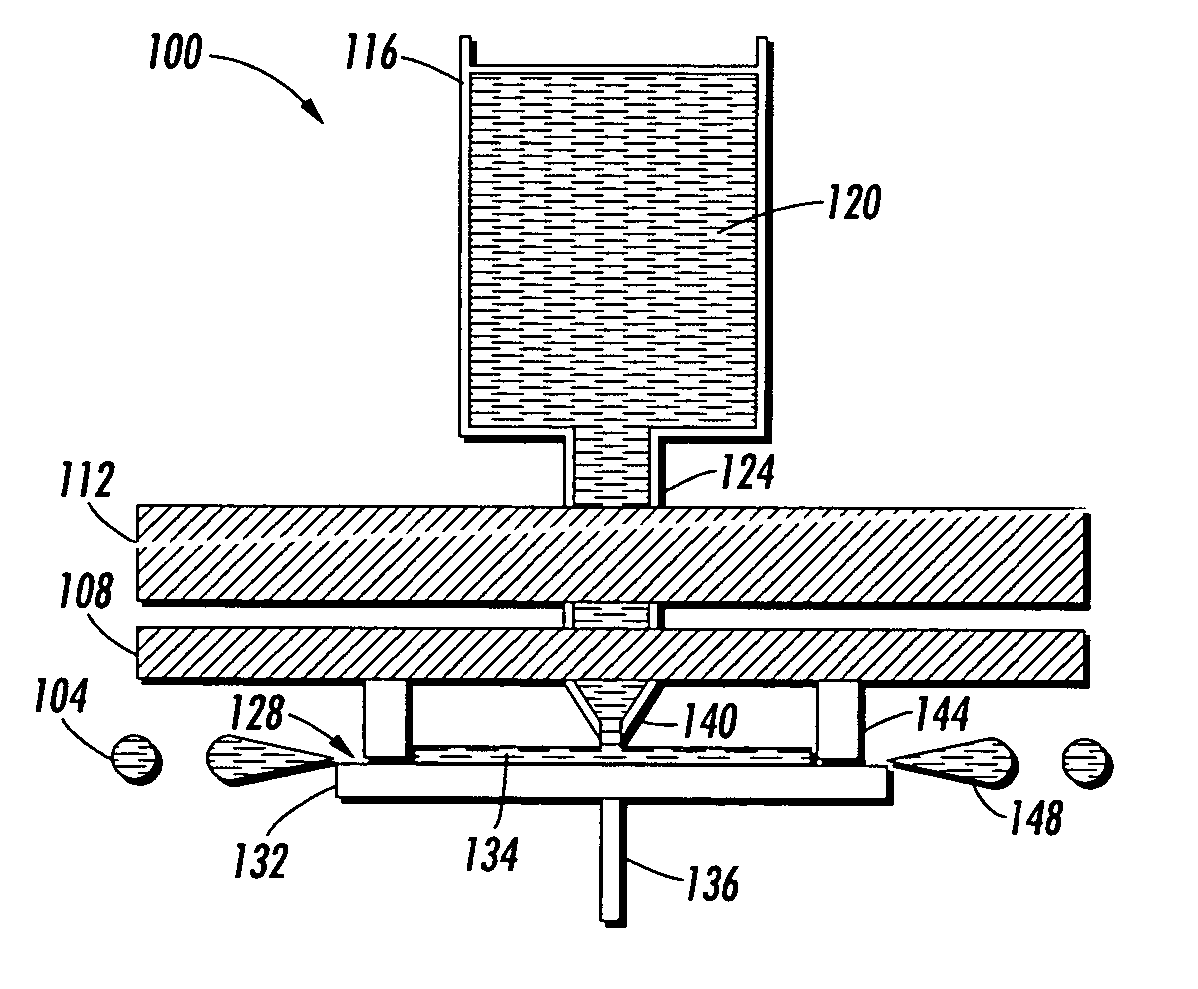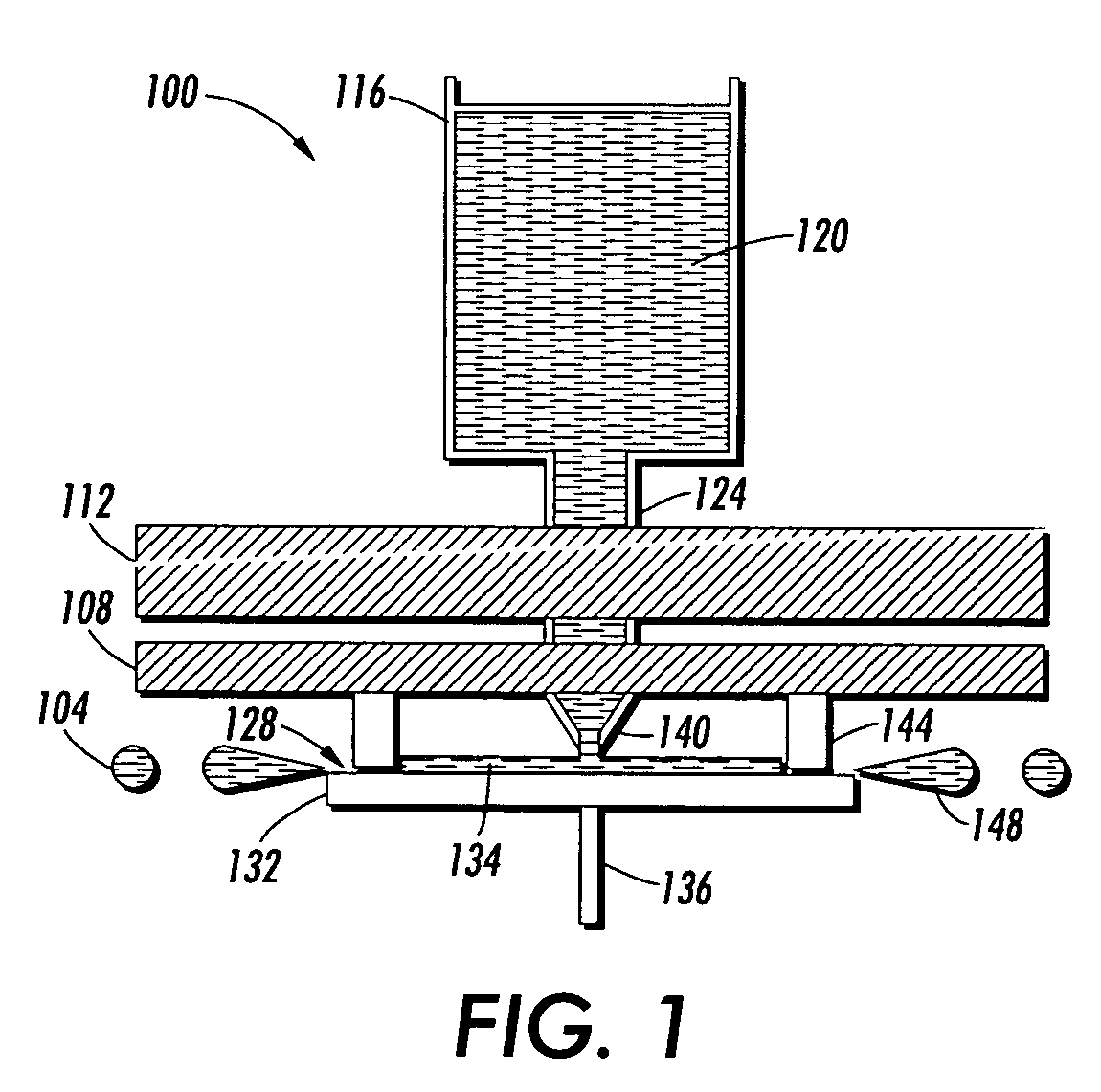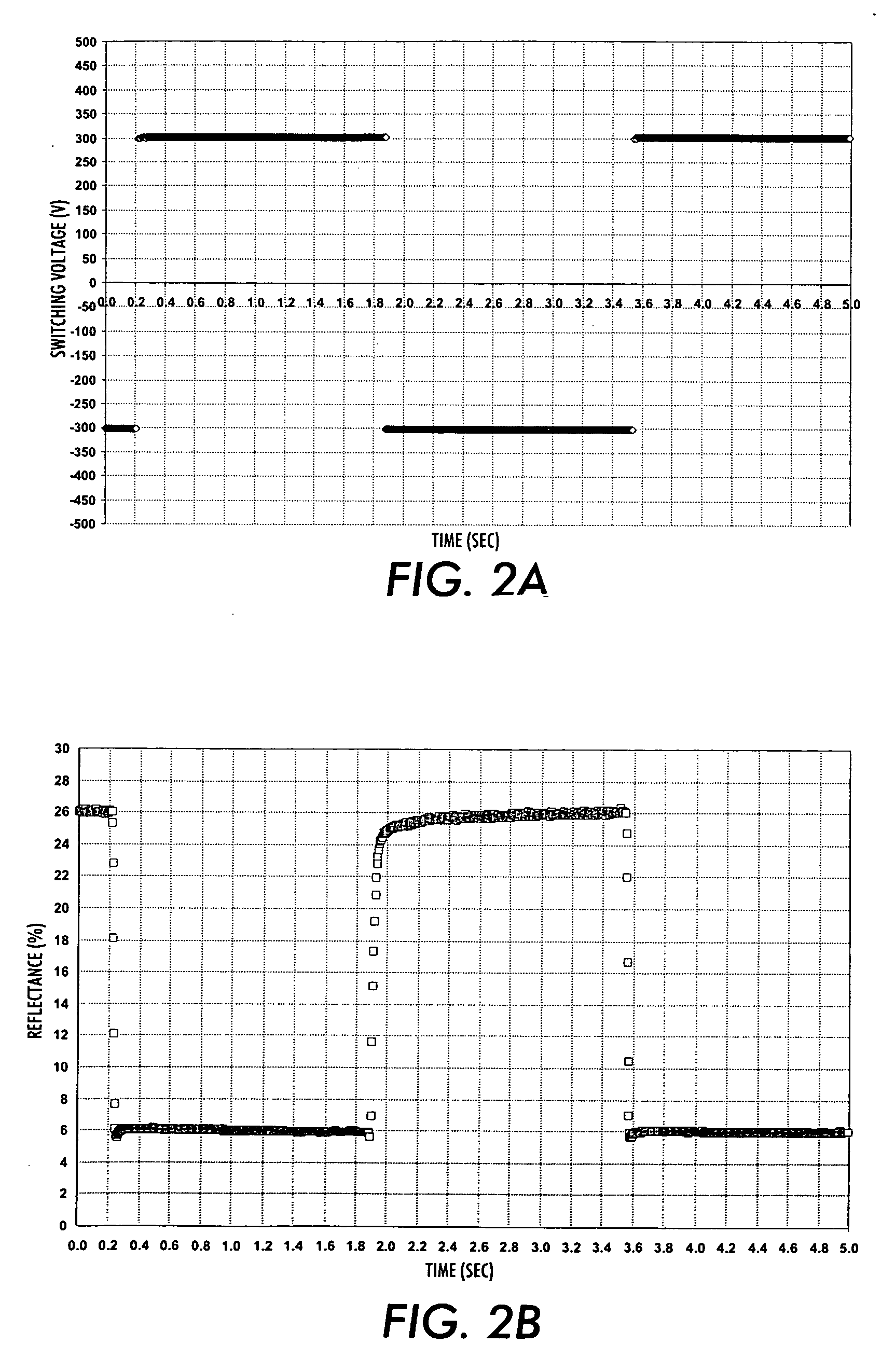Particles for electrophoretic media
- Summary
- Abstract
- Description
- Claims
- Application Information
AI Technical Summary
Benefits of technology
Problems solved by technology
Method used
Image
Examples
example 1
[0071] This example illustrates the preparation of triboelectrically charged particles in a thermoplastic using a moving substrate to charge the pigment particles.
[0072] White pigmented wax—30 grams of TiO2 (R104 from DuPont) is dispersed in 70 g of Polywax 1000 at 130° C. by an IKA T-25 homogenized for 1 hour. Black pigmented wax—20 grams of black pigment (Ferro 6331), 3 grams of X5175 (Baker Petrolite) is dispersed in 77 g of Polywax 1000 at 130° C. by an IKA T-25 homogenizer for 1 hour.
[0073] The pigmented wax is melted and kept in the reservoir at 130-150° C. as illustrated in FIG. 1. The metal disc is spun at 5900-6000 rpm although other speeds are possible. The shroud and nozzle temperature are set at 150° C. and 130° C. respectively. The particles are collected and sieved through a 75 micron screen, then equal amounts of black and white particles are suspended in silicone 200 fluid (1 centistoke, Dow Coming silicone oils). A drop of suspension is sandwiched between two ITO ...
example 2
[0074] This example illustrates the fabrication of an electrophoretic display that incorporates capsules with one or more coated triboelectrically charged pigment particles.
[0075] One embodiment includes fabricating devices by using encapsulated 2-particle ink into a polymeric binder. Micron sized electrophoretic particles black and white, prepared as described in Example 1, are dispersed in a hydrocarbon solvent like Isopar M®. For example ink and capsule preparation includes 5 grams of a black and 5 grams of a white ink prepared as described is dispersed in 35 g of Isopar M®. The prepared ink is encapsulated via complex coacervation with gelatin-polyphosphate or gelatin-gum Arabic. The microcapsules are cross linked with gluteraldehyde to furnish wet deformable capsules. The capsules are wet sieved to obtain the desired fraction containing capsules of 212 to 180 micron size.
[0076] A device can be fabricated using the capsules. For example, 6 grams of wet capsules are filtered th...
PUM
| Property | Measurement | Unit |
|---|---|---|
| Temperature | aaaaa | aaaaa |
| Length | aaaaa | aaaaa |
| Time | aaaaa | aaaaa |
Abstract
Description
Claims
Application Information
 Login to View More
Login to View More - R&D
- Intellectual Property
- Life Sciences
- Materials
- Tech Scout
- Unparalleled Data Quality
- Higher Quality Content
- 60% Fewer Hallucinations
Browse by: Latest US Patents, China's latest patents, Technical Efficacy Thesaurus, Application Domain, Technology Topic, Popular Technical Reports.
© 2025 PatSnap. All rights reserved.Legal|Privacy policy|Modern Slavery Act Transparency Statement|Sitemap|About US| Contact US: help@patsnap.com



